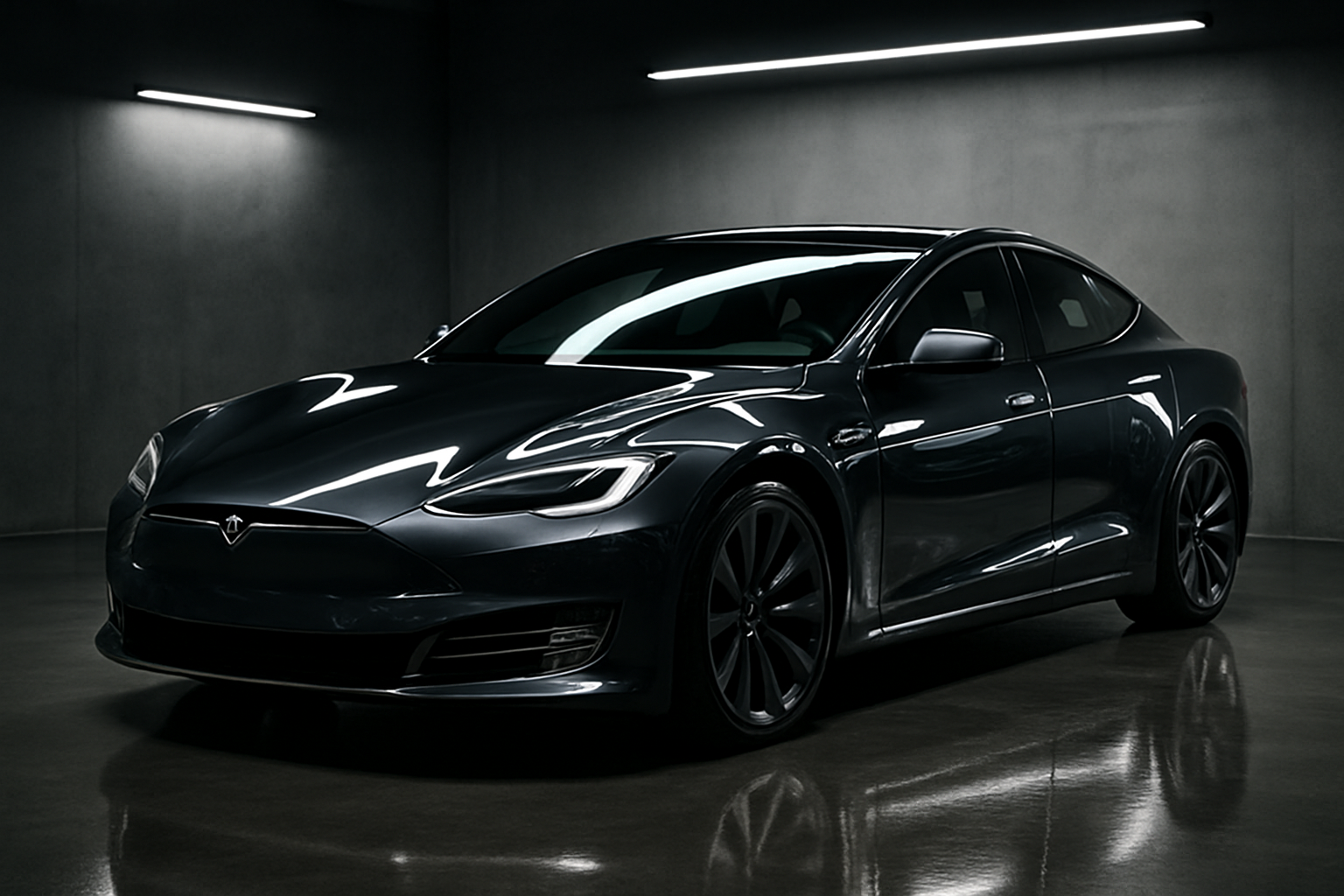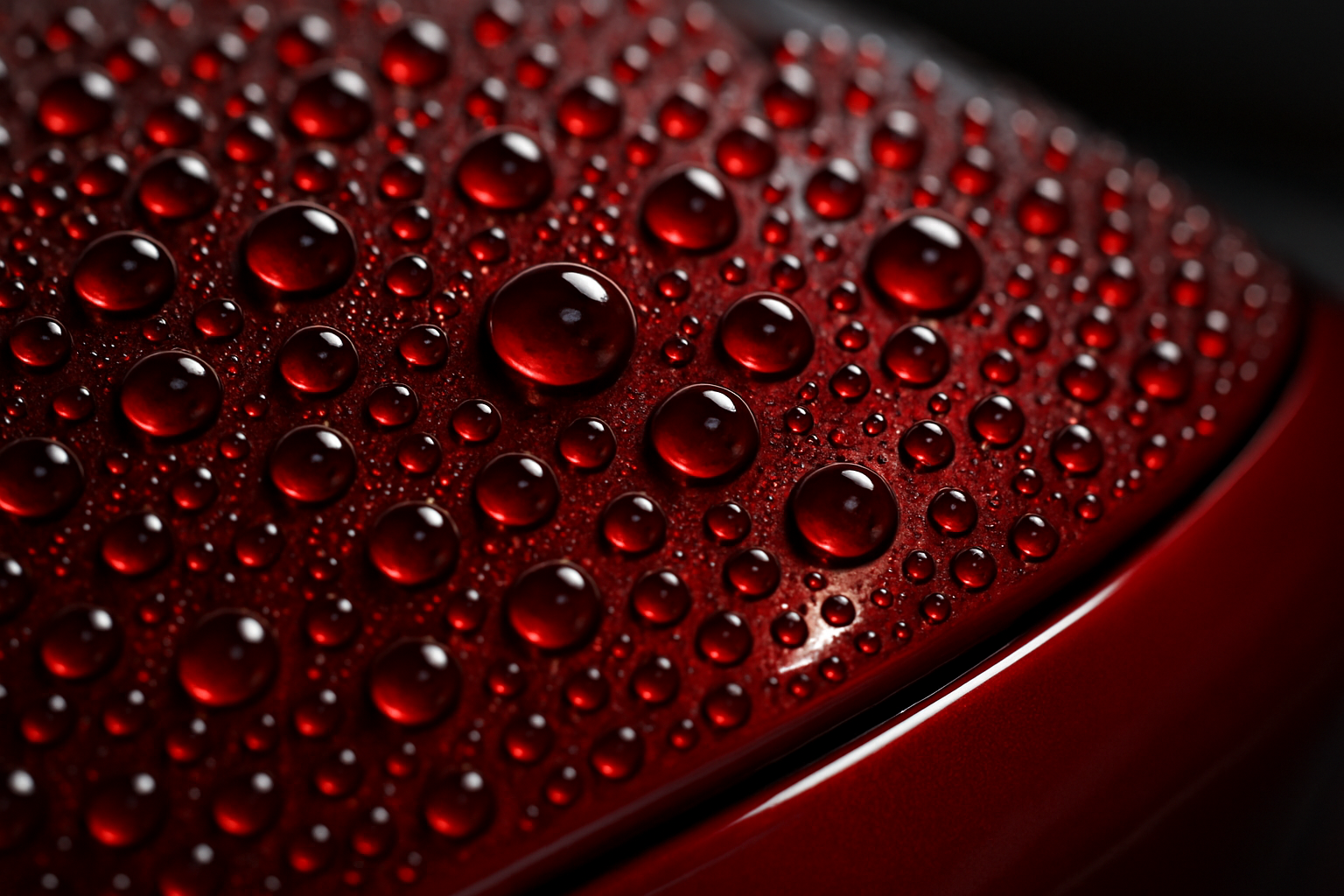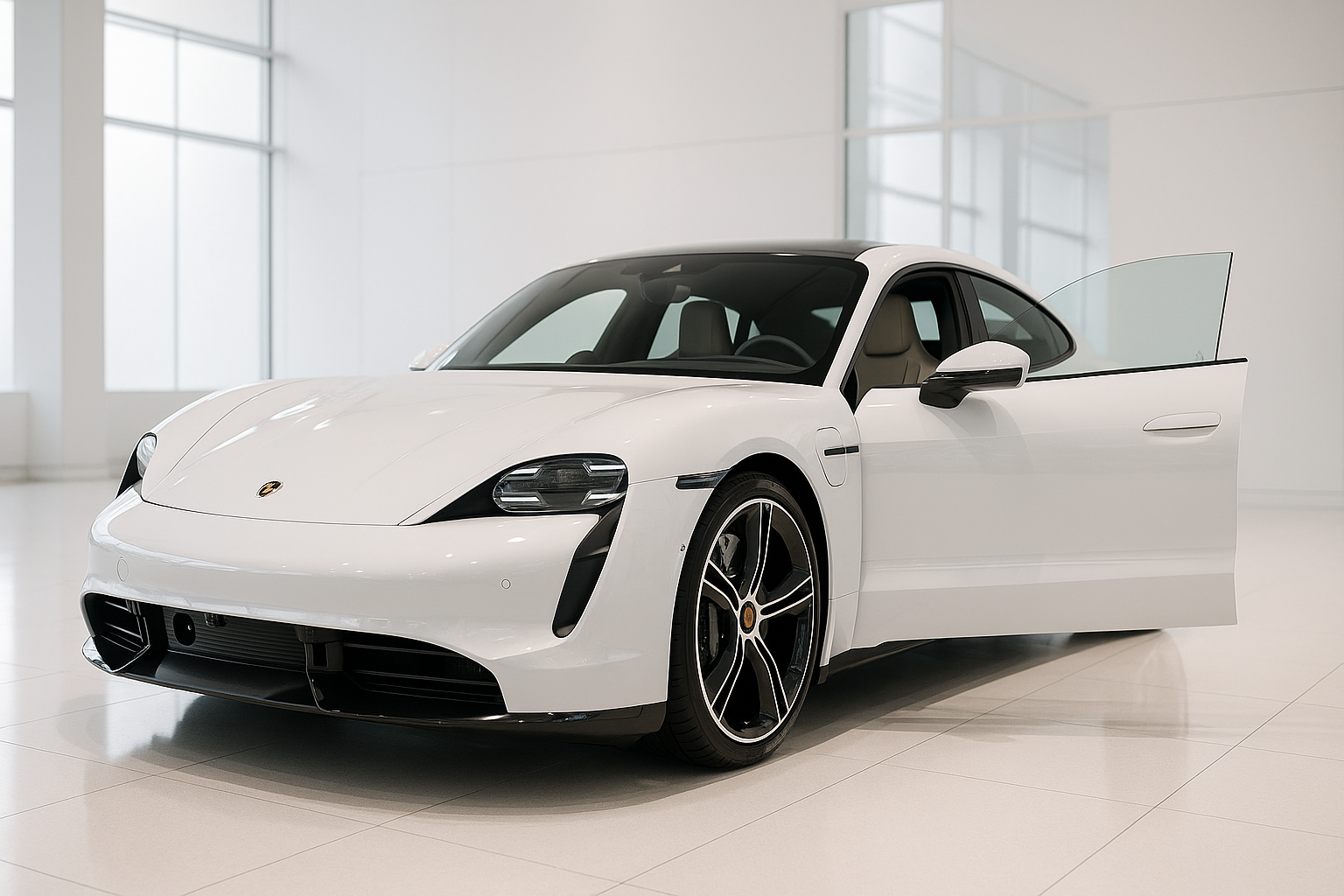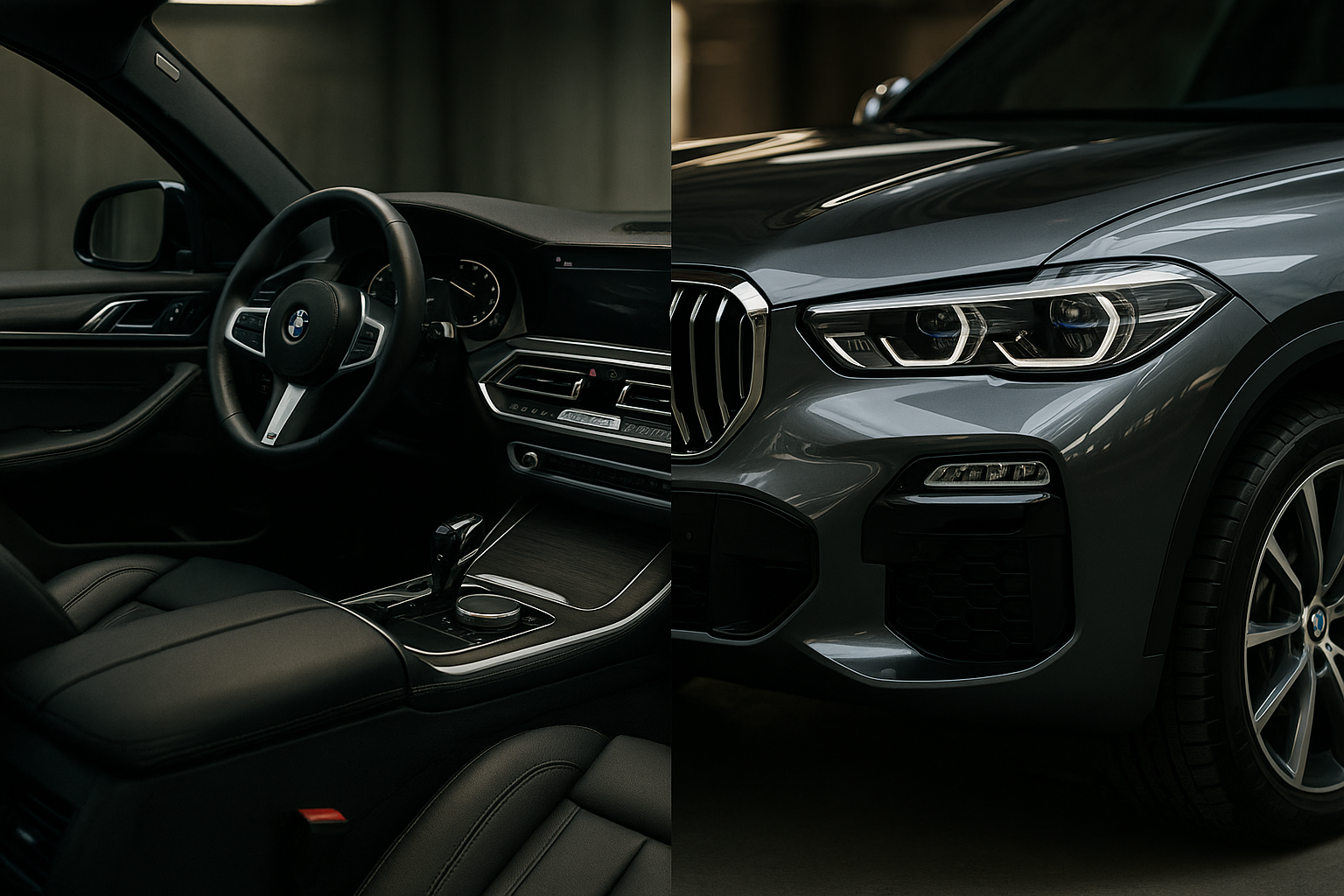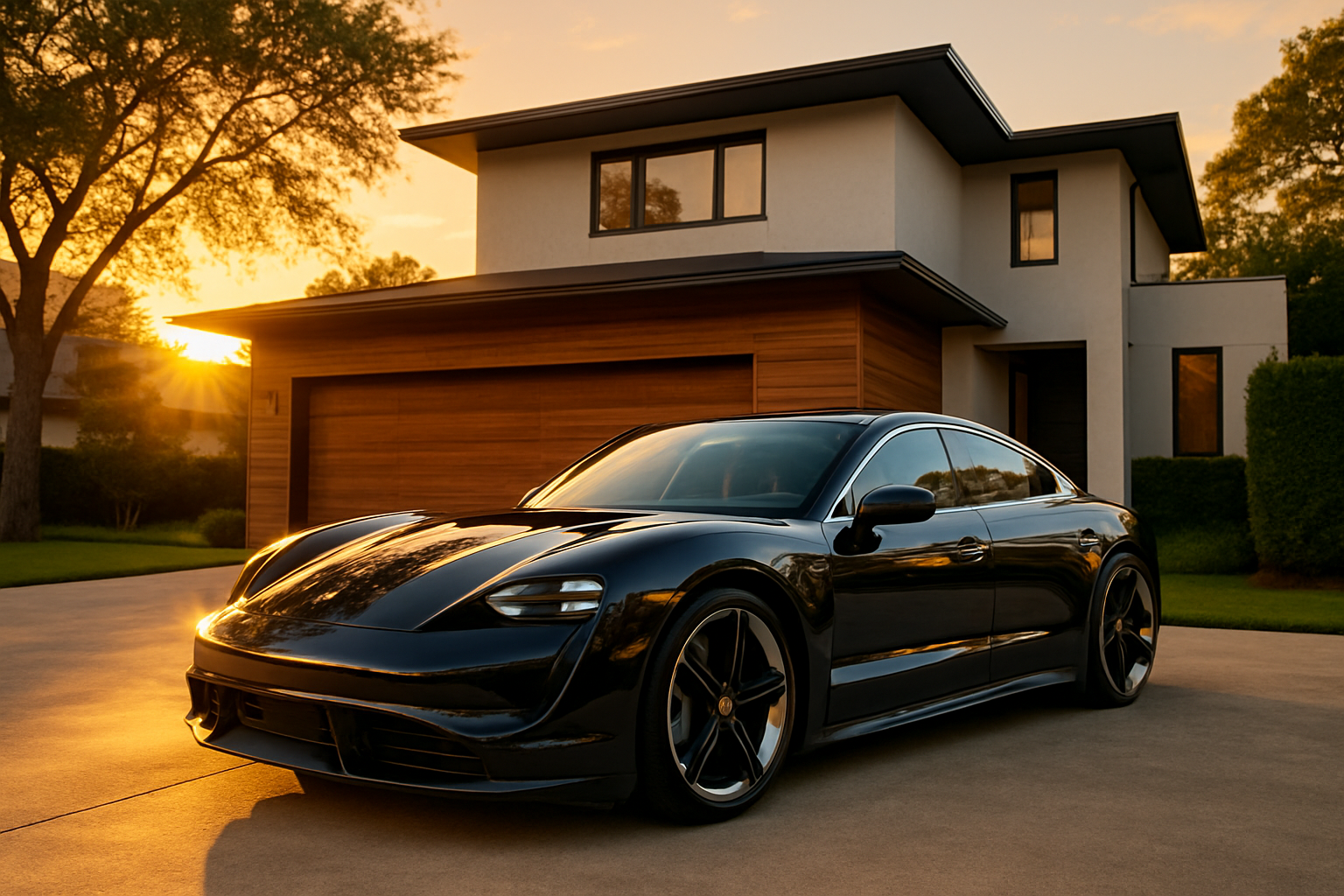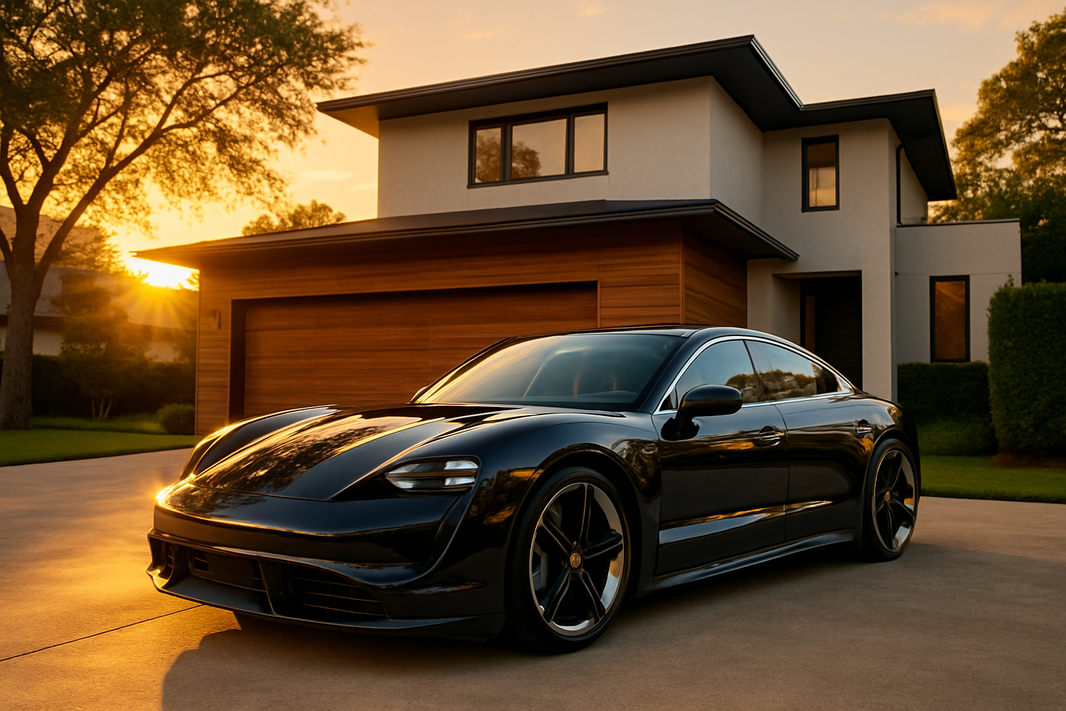For the discerning vehicle owner in Houston, the sun is a relentless, formidable adversary. It is the source of our brilliant blue skies and warm weather, but it is also the single greatest threat to your vehicle's aesthetic perfection and long-term value. The intense, unforgiving Texas sun wages a daily war against your car's delicate paintwork, a battle that, if left unaddressed, will inevitably lead to fading, oxidation, and irreversible clear coat failure.
Welcome to the definitive guide for protecting your automotive investment. This is not another superficial list of quick tips. This is a comprehensive, deep-dive resource from the experts at Major Detailz, crafted specifically for the enthusiast who understands their vehicle is more than just transportation—it's an asset. We will explore the science behind solar damage, meticulously evaluate every level of protection available, and provide you with a strategic plan to preserve the flawless finish of your vehicle for years to come.
Chapter 1: The Enemy - Understanding How the Texas Sun Destroys Your Paint
To effectively defend against an enemy, you must first understand it. The beautiful sunlight we see is a complex cocktail of electromagnetic radiation, and several of its components are uniquely destructive to the complex layers of polymers that make up your vehicle's paint. The primary culprits are Ultraviolet (UV) radiation and Infrared (IR) radiation.

The Silent Assassin: Ultraviolet (UV) Radiation
UV radiation is the most widely known cause of solar damage. It arrives in two primary forms that affect your paint: UV-A and UV-B. Think of these as tiny, high-energy bullets constantly bombarding your vehicle's finish. The primary target of these bullets is your car's clear coat.
Your clear coat is the uppermost, transparent layer of your paint. Its job is to provide gloss and protect the colored base coat underneath. This layer is made of long, intertwined chains of polymers. When UV photons strike these polymer chains, they can break the molecular bonds that hold them together. This process is called photodegradation.
Initially, this damage is invisible. But over months and years of relentless exposure, the cumulative effect is catastrophic. The polymer chains become shorter and weaker, losing their integrity. This manifests in several ways:
-
Fading and Discoloration: As the clear coat degrades, it loses its optical clarity. It can no longer transmit light perfectly to the color coat below, making the color appear dull, muted, and faded. This is especially noticeable on vibrant colors like red, which absorb a great deal of UV radiation.
Oxidation:
- The broken polymer bonds in the clear coat create openings for oxygen molecules to attack the paint. This is the same chemical process that causes metal to rust. On your paint, it appears as a chalky, hazy, or milky finish, robbing the surface of its depth and gloss. -
Clear Coat Failure:
- This is the final, irreversible stage of UV damage. The clear coat has been so thoroughly degraded that it delaminates from the base coat. It begins to crack, peel, and flake away, leaving the fragile color coat exposed to the elements. Once this occurs, the only solution is a complete repaint of the affected panel, a very costly procedure.
The Heat Magnifier: Infrared (IR) Radiation and Extreme Surface Temperatures
While UV radiation attacks your paint on a molecular level, Infrared radiation—which we feel as heat—creates a different, equally damaging problem. Under the direct Texas sun, the surface of a vehicle, especially a dark-colored one, can reach temperatures exceeding 180°F. This extreme heat has several negative consequences.
First, it accelerates all the chemical reactions we just discussed. The photodegradation caused by UV rays happens much faster at higher temperatures. Think of it as pouring gasoline on a fire. The heat supercharges the destructive process.
Second, extreme heat can cause the paint and its underlying metal panels to expand and contract. Over time, this thermal cycling can create micro-fractures in the clear coat, making it even more susceptible to UV damage and moisture intrusion.
Finally, this heat is a major problem for temporary forms of protection, like traditional carnauba waxes. Many natural waxes have a melting point well below the surface temperature of a car in a Houston summer, causing them to break down and evaporate in a matter of weeks, leaving your paint defenseless.
Chapter 2: The Arsenal - A Strategic Evaluation of Your Protective Options
Now that we understand the enemy, we can strategically evaluate our arsenal of defensive weapons. It's crucial to understand that paint protection is not a single product, but a spectrum of options, each with its own level of effectiveness, durability, and required investment. We will categorize these into three distinct levels of defense.

Level 1: The Foundation - Essential, Non-Negotiable Practices
Before we discuss any product, we must establish the foundational practices that are essential for any vehicle owner in Texas. These habits are the baseline of proper car care and are critical to the success of any protective product you apply.
1. The Power of Shade
The single most effective, cost-free method of protecting your car is to limit its direct sun exposure. Whenever possible, seek out covered parking. A garage is ideal, but even a carport, a parking deck, or the shade of a large building can dramatically reduce the hours your vehicle spends baking in direct UV and IR radiation. This simple act can add years to the life of your paint.
2. Meticulous and Safe Washing
Washing your car is not just about making it look clean; it's about removing harmful contaminants before they can cause permanent damage. Bird droppings, bug splatter, tree sap, and road tar are all highly acidic. When baked onto your paint by the Texas sun, they can quickly etch through the clear coat, leaving a permanent mark. Regular, safe washing is non-negotiable.
However, how you wash is just as important as when. The automatic car washes with their spinning brushes are a primary cause of the swirl marks and fine scratches that plague so many vehicles. These abrasions act like a net, catching light and dulling your paint's finish. A proper, meticulous hand wash using the two-bucket method, pH-neutral soap, and clean microfiber towels is the only way to ensure you are cleaning your vehicle without inflicting damage.
Level 2: The Barrier - Temporary, Sacrificial Protection
This level involves applying a physical barrier to your paint that will take the abuse from the sun instead of your clear coat. These are sacrificial layers designed to break down over time and be reapplied.
1. Natural Waxes (e.g., Carnauba)
Carnauba wax has been a staple of the detailing world for decades. It is prized for the deep, warm, wet-look gloss it imparts on paint. It is a natural substance derived from a Brazilian palm tree that evolved to protect its leaves from the intense tropical sun.
- Pros: Excellent aesthetic results, particularly on dark colors. Relatively inexpensive and easy to apply for a DIY enthusiast.
- Cons for the Texas Climate: The primary drawback is its very low durability in high heat. Carnauba wax has a relatively low melting point. On a 180°F car panel, it will soften and degrade rapidly, often providing only 3-5 weeks of meaningful protection in a Houston summer before needing reapplication. It also offers minimal chemical resistance.
2. Synthetic Paint Sealants
Paint sealants are the lab-engineered evolution of waxes. They are made from synthetic polymers that are designed to be far more durable and resistant to heat and chemicals. They bond more strongly to the paint surface than a wax, which simply sits on top.
- Pros: Significantly more durable than wax, often lasting 4-6 months, even in Texas. They typically provide a sharper, more reflective shine. They offer better chemical resistance and UV protection.
- Cons: While more durable than wax, they are still a temporary solution that requires reapplication several times a year. The gloss they provide, while brilliant, may not have the same depth and warmth that some enthusiasts love from a high-quality carnauba wax.
Level 3: The Fortress - Professional-Grade, Long-Term Defense
For the discerning owner who seeks a truly long-term, low-maintenance solution, we enter the realm of professional-grade protection. These are not products you can find at an auto parts store; they are advanced chemical coatings and physical films that require a controlled environment and expert application to achieve their incredible potential.
1. Professional Ceramic Coatings (SiO2)
A ceramic coating is a liquid polymer that, when applied to a vehicle's surface, chemically bonds with the factory paint, creating a semi-permanent, glass-like layer of protection. This is not a sealant that sits on top of the paint; it becomes a functional part of the surface itself. This bond is what gives it its incredible durability, with professional coatings lasting for years, not months.
- Pros: Unmatched durability (1-9+ years), extreme chemical resistance (impervious to bird droppings and bug guts), powerful UV-blocking properties, intense candy-like gloss, and extreme hydrophobicity (water-repellency), which makes the vehicle dramatically easier to clean.
- Cons: Requires professional application in a controlled environment after a mandatory paint correction. It is a significant investment upfront, though its longevity provides exceptional value over time.
2. Paint Protection Film (PPF or Clear Bra)
Paint Protection Film is the absolute pinnacle of physical paint defense. PPF is a thick, optically clear, thermoplastic urethane film that is applied to the high-impact areas of a vehicle (or the entire vehicle). Its primary job is to absorb physical impacts that would otherwise chip or scratch the paint.
- Pros: Unrivaled protection against rock chips, gravel, deep scratches, and scuffs. Most modern films are "self-healing," meaning light scratches and swirl marks will disappear on their own with the application of heat (like from the sun). It is virtually invisible when installed correctly.
- Cons: It is the most significant investment in paint protection. Like ceramic coatings, it requires expert, professional installation for a flawless result.
Chapter 3: A Deep Dive into Ceramic Coatings - The Ideal Shield for the Texas Climate
For the vast majority of vehicle owners in Houston, a professional ceramic coating represents the single most effective and valuable investment in paint protection. Let's explore exactly why this technology is so perfectly suited to our unique environmental challenges.
The Science of the Bond: Why a Coating is Not a Sealant
As we discussed, a sealant is a polymer that creates a temporary bond with the paint surface. A ceramic coating, based on Silicon Dioxide (SiO2), goes a step further. Through a process called covalent bonding, the coating's nanoparticles form a cross-linked, three-dimensional structure that interlocks with the pores of your clear coat. This creates a single, unified, and incredibly hard layer.
This molecular bond is why a ceramic coating cannot be washed off. It must be mechanically abraded (polished) to be removed. This permanence is the source of its long-term protective qualities.

The Key Benefits for a Texas Vehicle Owner
- Extreme UV Resistance: Professional-grade ceramic coatings contain powerful UV inhibitors, much like high-end sunscreen. The glass-like SiO2 layer acts as a barrier, absorbing and reflecting the harmful UV radiation before it can ever reach your clear coat. This is your number one defense against the fading and oxidation caused by the relentless sun.
- Superior Heat Tolerance: Unlike organic waxes, the inorganic, ceramic nature of the coating gives it a massive tolerance for heat. It will not melt, soften, or degrade on a hot car panel, ensuring it continues to protect your vehicle through the peak of a Houston summer.
- Unmatched Chemical Resistance: The acidic nature of bird droppings and bug splatter is amplified by heat. A ceramic coating is chemically inert, meaning these substances cannot etch or burn through it. You have a much wider window of time to safely wash them away without fear of permanent damage.
- -
The Self-Cleaning Effect:
- The extreme hydrophobicity of a ceramic coating means that water, and the dirt it carries, has a very difficult time sticking to the surface. Rain will bead up and roll off, taking much of the surface dust with it. This "self-cleaning" effect means your car stays cleaner for longer, and when you do wash it, the process is significantly faster and easier.
The Importance of Preparation: Paint Correction is Non-Negotiable
A ceramic coating is a semi-permanent layer of protection. This means it will lock in the current state of your paint for years. If your paint has swirl marks, fine scratches, or water spots, the coating will lock those imperfections in, and in many cases, the added gloss will make them even more noticeable.
For this reason, at Major Detailz, we consider a minimum of a single-stage paint correction to be a mandatory prerequisite for any ceramic coating application. The process of machine polishing removes these defects, restores a flawless, high-gloss finish, and creates a perfectly clean surface for the coating to achieve its strongest possible bond. You can learn more about our gloss enhancement process here.
Chapter 4: A Deep Dive into Paint Protection Film (PPF) - The Unseen Armor
While a ceramic coating is the master of chemical and environmental protection, Paint Protection Film is the undisputed champion of physical defense. If your primary concern is the rocks, gravel, and road debris kicked up on Houston's highways, PPF is the investment you need to consider.
How Self-Healing Technology Works
Modern PPF is a marvel of material science. The top layer of the film is a special elastomeric polymer. When this layer is lightly scratched or swirled, its polymer chains are disrupted. The application of heat—either from the sun, warm water, or a heat gun—causes these chains to return to their original, interlinked state, and the scratch effectively disappears. This means your vehicle can maintain a swirl-free finish for years, even with daily driving.

The Most Common PPF Coverage Options
- Partial Front End: This is a popular entry-level option that covers the leading 18-24 inches of the hood and fenders, the full front bumper, and the side mirrors. It protects the most common impact zones.
- -
Full Front End:
- The most popular choice for discerning enthusiasts. This includes the entire hood, both full front fenders, the front bumper, and the side mirrors. This provides comprehensive protection for the entire forward-facing portion of the vehicle without any visible lines on the hood or fenders. -
Track Package:
- This builds on the Full Front End by adding coverage to the rocker panels (the area behind the front wheels) and the area in front of the rear wheels, which are susceptible to debris kicked up by the tires. -
Full Vehicle Coverage:
- For the ultimate peace of mind, the entire vehicle can be wrapped in PPF, protecting every painted panel from any form of physical damage.
The Ultimate Synergy: PPF + Ceramic Coating
The ultimate protection strategy, chosen by the most discerning owners, is to combine these two incredible technologies. First, we install PPF on the high-impact areas of the vehicle. Then, we apply a professional-grade ceramic coating over the entire vehicle, including on top of the PPF.
This provides a vehicle with an almost impenetrable shield. The PPF stops the physical impacts, and the ceramic coating provides the UV protection, chemical resistance, and extreme gloss, while also making the PPF itself hydrophobic and easier to clean. It is a truly comprehensive and synergistic approach to total vehicle preservation.
Chapter 5: Your Meticulous Strategy - Creating a Complete Protection Plan
Protecting your vehicle in Texas is not about a single product, but about a holistic strategy. Here is the Major Detailz recommended approach for different scenarios.
For a Brand New Vehicle:
A new vehicle presents the perfect opportunity to start fresh. The paint is in its best possible condition. We recommend a "New Car Preparation" service. This involves a gentle decontamination wash, a very light polish to remove any minor marring from dealership handling, and then the immediate application of your chosen protection. For a new vehicle, we strongly recommend a Full Front End PPF installation followed by a multi-year ceramic coating over the entire car. This preserves its factory-perfect finish from day one.
For a Vehicle 1-5 Years Old:
This vehicle has likely accumulated some light swirl marks and signs of wear. The ideal approach is our Connoisseur Detail package. This involves a multi-stage paint correction to restore the paint to a flawless, better-than-new condition, followed by a long-term ceramic coating (such as our 5-year option) to lock in that perfection. Adding PPF to the front end is also highly recommended.
For Maintaining a Protected Vehicle:
Once your vehicle is protected with a ceramic coating, maintenance becomes simple. You must avoid automatic car washes. Perform regular, safe hand washes with a pH-neutral soap. We also recommend an annual "Decontamination Detail" at our studio, where we can perform a deep cleaning and apply a special top coat to rejuvenate your coating and ensure it is performing at its peak.

Conclusion: An Investment in Perfection
The Texas sun is an undeniable and formidable force. It works tirelessly to diminish the beauty and value of your automotive investment. But with a strategic, proactive approach, you can ensure your vehicle remains a source of pride for years to come.
While essential practices like seeking shade and performing safe hand washes are the foundation of car care, true long-term preservation in our climate requires a professional-grade solution. The advanced polymer science of a synthetic sealant offers a good temporary barrier, but the molecularly-bonded, semi-permanent defense of a professional ceramic coating offers a level of UV, heat, and chemical resistance that is simply unmatched. For ultimate defense against the physical damage of the road, Paint Protection Film stands in a class of its own.
Protecting your vehicle is a choice. It is a choice to reject mediocrity and to invest in the meticulous craftsmanship and advanced technology that will preserve your asset's flawless finish. If you are ready to equip your vehicle with the ultimate shield against the Texas sun, we invite you to take the next step.
Contact Major Detailz today for a personalized consultation and quote. Let us show you the difference that a true commitment to automotive perfection can make.

